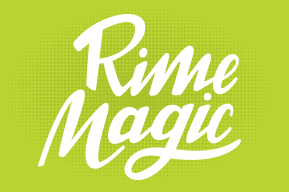Onset/Rime Research
Onset/Rime research is the basis for the Rime Magic system.
What is onset/rime?
An onset is the consonant or consonant blend at the beginning of a word that precedes the first vowel. It can be one, two, or three letters long.
In the word cat, the onset is c.
In the word flat, the onset is fl.
In the word splat, the onset is spl.
A rime begins with the first vowel and continues to the end of the syllable.
Therefore, in each of the words above, the rime is at.
Each syllable has an onset and a rime or just a rime.
For example, the word about has only a rime in the first syllable (a) and both an onset (b) and a rime (out) in the second syllable.
Margaret Moustafa has written extensively about the importance of focusing on the rime in the word as a critical “chunk”.
From Margaret Moustafa, California State University, Los Angeles:
Three important counter-intuitive discoveries in education, linguistics, and psychology have led to a new way of teaching letter-sound correspondences to children learning to read. Here I will briefly review these discoveries and describe the new way of teaching children letter-sound correspondences based on these discoveries.
- The first discovery is the discovery that early readers read print better in familiar context than outside of such context (e.g., Goodman, 1965; Kucer, 1985; Nicholson, 1991; Rhodes, 1979; Ruddell, 1965; Stanovich, 1991). For example, early readers may see the print word horse in a list of words and say house but see the same word in a story about cowboys and say horse. They also read stories with familiar language better than stories with unfamiliar language such as the language in “decodable” texts (e.g., The fat cat sat on the mat).
- The second discovery is the discovery that young children are competent at analyzing spoken words into onsets and rimes but not into phonemes when onsets or rimes consist of more than one phoneme (Calfee, 1977; Goswami & Bryant, 1990; Liberman, et al., 1974; Treiman, 1983, 1985). Onsets are any consonants before a vowel in a spoken syllable; rimes are the vowel and any consonants after it. The one-syllable word smiles, for example, consists of an onset, /sm/, and a rime, /ilz/. The onset /sm/ consists of the phonemes /s/ and /m/; the rime /ilz/ consists of the phonemes /i/, /l/, and /z/. Young children can mentally analyze smiles into /sm/ and /ilz/ without being taught to do so but have difficulty analyzing it into /s/, /m/, /i/, /l/, and /z/, even with instruction.
- The third discovery is the discovery that young children who are beginning to read make analogies between familiar and unfamiliar print words to pronounce unfamiliar print words and that they make these analogies at the onset-rime level rather than at the phonemic level (Goswami, 1986, 1988). That is, by learning to recognize the print words small and smile, children figure out that sm– is pronounced /sm/ and use that knowledge to pronounce sm– in other words with sm-. The more print words children recognize, the better position they are in to make analogies between familiar and unfamiliar words to pronounce unfamiliar words (Goswami, 1986, 1988; Moustafa, 1995).
Calfee, R. (1977). Assessment of individual reading skills: Basic research and practical applications. In A. S. Reber & D. L. Scarborough (Eds.), Toward a psychology of reading (pp. 289-323). New York: Erlbaum.
Goodman, K. (l965). A linguistic study of cues and miscues in reading. Elementary English, 42, 639-643.
Goswami, U. (1986). Children’s use of analogy in learning to read: A developmental study. Journal of Experimental Child Psychology, 42, 73-83.
Goswami, U. (1988). Orthographic analogies and reading development. The Quarterly Journal of Experimental Psychology, 40A, 239-268.
Goswami, U. and Bryant, P. (1990). Phonological skills and learning to read. Hillsdale, NJ: Earlbaum.
Kucer, S. (1985). Predictability and readability: The same rose with different names? In M. Douglas (Ed.), Claremont reading conference forty-ninth yearbook (pp. 229-246). Claremont, CA: Claremont Graduate School.
Liberman, I. Shankweiler, D., Fischer, F. & Carter, B. (1974). Explicit syllable and phonemes segmentation in the young child. Journal of Experimental Child Psychology, 18, 201-212.
Moustafa, M. (1995). Children’s productive phonological recoding. Reading Research Quarterly, 30, 3, 464-476.
Nicholson, T. (1991). Do children read words better in context or in lists? A classic study revisited. Journal of Educational Psychology, 83, 444-450.
Rhodes, L. K. (1979). Comprehension and predictability: An analysis of beginning reading materials. In J. Harste & R. Carey (Eds.), New perspectives on comprehension (pp. 100-130). Bloomington, IN: School of Education, Indiana University.
Ruddell, R.B. (1965). The effect of oral and written patterns of language structure on reading comprehension. The Reading Teacher 18: 270-275.
Stanovich, K. E. (1991). Word recognition: changing perspectives. In R. Barr, M. L. Kamil, P. Mosenthal, & P. D. Person (Eds.), Handbook of reading research (Vol. 2, pp. 418-452). Hillsdale, NJ: Earlbaum.
Treiman, R. (1983). The structure of spoken syllables: Evidence from novel word games. Cognition, 15, 49-74.
Treiman, R. (1985). Onsets and rimes as units of spoken syllables: Evidence from children. Journal of Experimental Child Psychology, 39, 161-181.
